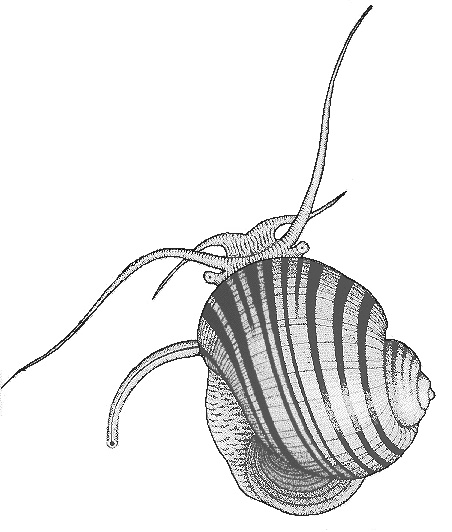Molluscan Forum 2021
The Malacological Society of London
www.malacsoc.org.uk
https://malacsoc.org.uk/molluscan-forum/
Molluscan Forum
Thursday 18th November 2021
9.45 – 4.30 (TBC)
This informal, annual, and successful meeting is designed to bring together people starting their research on molluscs, to give them the opportunity to present and discuss their work and to compare notes on methods and problems.
Attendance at the Molluscan Forum is open to all, but presenters should be research students, post-doctoral researchers, undergraduate students starting molluscan projects, and amateurs engaged in substantial projects that have not yet been published. Any topic related to molluscs is acceptable: palaeontological, physiological, behavioural, ecological, systematic, morphological, cellular, or molecular.
Short talks (~15 mins) or quick fire talks (3 slides, 5 mins, in lieu of posters) may be offered. They need not be polished accounts of completed work; descriptions of new methods, work in progress, and appeals for assistance with unsolved problems are equally acceptable.
There is NO registration fee.
Enquiries and registrations to:
Phil Hollyman, Fisheries Ecologist, British Antarctic Survey (Dit e-mailadres wordt beveiligd tegen spambots. JavaScript dient ingeschakeld te zijn om het te bekijken.)
Non-presenters: please let us know you will be coming so that we can estimate numbers.
REGISTRATION FORM
Return before 1st October 2021, by email to:
Phil Hollyman, Fisheries Ecologist, British Antarctic Survey (Dit e-mailadres wordt beveiligd tegen spambots. JavaScript dient ingeschakeld te zijn om het te bekijken.)
Name................................................................................................................……………
Institute..........................................................................................................…………..…
......................................................................................................................………………
Email.................................................................................................……………...............
Status: Research Student / Undergraduate / Post-doctoral researcher / amateur (delete as appropriate)
‘Other’ (please state) ………………………..
I wish to give a talk / quick-fire talk (delete as appropriate) entitled:
.............................................................................................................................………………………
..............................................................................................................................……………………...
Please attach, as a Microsoft Word attachment, an abstract of not more than 350 words, TOGETHER WITH TWO .JPG IMAGES IN SUPPORT OF THE ABSTRACT. Abstracts and images of accepted contributions will be published in the Society’s on-line bulletin which is called The Malacologist. The Malacologist has an ISSN number and is published and archived on the website of the MSL.
Abstract submission
Abstracts submitted for the Molluscan Forum should be sent as Microsoft Word files.
Abstract submission
Please use the following format:
Title (12pt, centred)
<blank line>
Authors (10 pt, centred, presenting author underlined; use superscript numbers to indicate institutional affiliation)
<blank line>
Institutions (10pt, centred; in this order: Number (superscript), Department, Institution, City, Country)
Presenting Author email
<blank line>
Abstract (11pt, no indentation, justified, 350 words maximum)
EXAMPLE ABSTRACT
The Geographic Scale of Speciation in Stramonita (Neogastropoda: Muricidae)
Martine Claremont1,2, Suzanne T. Williams1, Timothy G. Barraclough2, and David G. Reid1
1 Department of Zoology, Natural History Museum, London, UK
2 Department of Biology, Imperial College London, Berkshire, UK
Email: Dit e-mailadres wordt beveiligd tegen spambots. JavaScript dient ingeschakeld te zijn om het te bekijken.
Stramonita is a relatively small, well-defined genus of muricid marine gastropods limited to the tropical Eastern Pacific and the Atlantic. The type species, S. haemastoma, is known to have teleplanic larvae and is estimated to remain in the water column for several weeks. Stramonita haemastoma shows regional variation, and this has led to the recognition of five geographical subspecies: S. h. haemastoma, from the Mediterranean and Eastern Atlantic to Brazil, S. h. floridiana, on the east coast of Florida and in the Eastern Caribbean, S. h. caniculata on the west coast of Florida and the Gulf of Mexico, S. h. rustica in the Western Caribbean and S. h. biserialis in the Eastern Pacific. The protoconch has been shown to be similar across the S. haemastoma complex, implying that all subspecies have equally long lived larvae. Within these subspecies, cryptic variation is suspected. For example, S. h. biserialis is suggested to be differentiated North/South on a small scale. In the presence of teleplanic larvae, speciation on such a small scale seems paradoxical. Various explanations for this paradox are possible. Actual (or realized) dispersal of Stramonita species may be more limited than presently believed, leading to allopatric differentiation. Alternatively, morphological differentiation may not be a reliable indicator of genetic differentiation, and S. haemastoma (sensu lato) might indeed prove to be a single taxa. It is also possible that ecological speciation could result in geographical speciation on a small scale in the presence of wide dispersal. My results suggest that five species of Stramonita are present in the Caribbean, at least three of which occur sympatrically. Gene flow is maintained between Caribbean and Mediterranean populations in at least one species, while no genetic differentiation was found along the Eastern Pacific coast. The implications of these results are discussed.
 The webpage text is licensed under a Creative Commons Attribution 4.0 License
The webpage text is licensed under a Creative Commons Attribution 4.0 License
